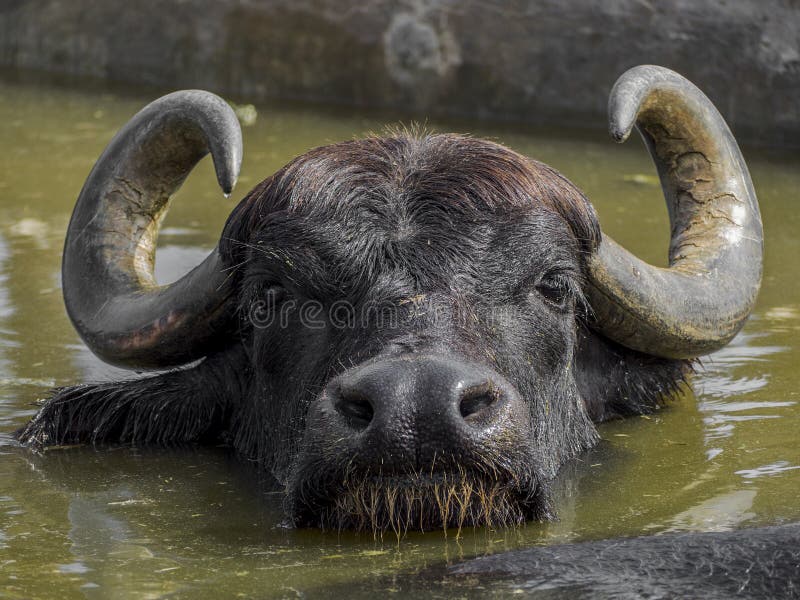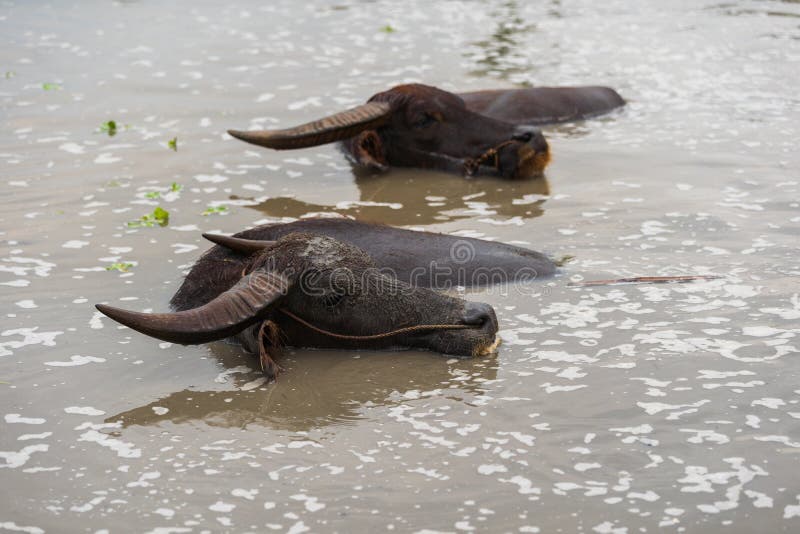Water Buffalo Swimming: The Fascinating Behavior And Benefits
Water buffalo swimming is a unique and essential behavior that plays a vital role in their survival and well-being. These majestic animals have developed remarkable adaptations that allow them to thrive in aquatic environments. Understanding their swimming habits can provide valuable insights into their lifestyle and ecological significance.
As one of the most resilient domesticated animals, water buffalo (Bubalus bubalis) are well-known for their ability to navigate through water with ease. This behavior is not only fascinating but also crucial for their survival, especially in regions with challenging climates and terrain. Their ability to swim helps them find food, escape predators, and regulate their body temperature.
In this comprehensive article, we will explore the science behind water buffalo swimming, its importance in their daily lives, and the various benefits it offers. We will also discuss the adaptations that make them exceptional swimmers and how this behavior contributes to their role in ecosystems worldwide.
Read also:Cass Holland Nude A Comprehensive Look Into The Misunderstood Controversy
Table of Contents
- Biological Adaptations for Swimming
- Behavioral Patterns in Water Buffalo Swimming
- Ecological Role of Swimming Water Buffalo
- Health Benefits of Swimming for Water Buffalo
- Impact of Domestication on Swimming Behavior
- Different Species of Water Buffalo and Their Swimming Habits
- Farming Practices and Water Buffalo Swimming
- Conservation Efforts to Protect Swimming Water Buffalo
- Scientific Research on Water Buffalo Swimming
- Cultural Significance of Water Buffalo Swimming
Biological Adaptations for Swimming
Water buffalo possess several biological adaptations that make them excellent swimmers. Their large, robust bodies and strong limbs provide the necessary power to propel themselves through water. Additionally, their wide hooves act as natural paddles, allowing them to navigate muddy or flooded terrains with ease.
Another critical adaptation is their ability to regulate body temperature. Water buffalo often submerge themselves in water or mud to cool down during hot weather, which is essential for their survival in tropical regions. This behavior also helps protect them from insect bites and sunburn.
Unique Physical Features
- Wide, splayed hooves for better traction in water
- Strong muscles for powerful swimming strokes
- Thick skin that provides buoyancy and protection
Behavioral Patterns in Water Buffalo Swimming
Water buffalo exhibit distinct behavioral patterns when it comes to swimming. They are known to swim in groups, which enhances their safety and efficiency. This social behavior allows them to cover long distances in search of food or water sources during dry seasons.
Research has shown that water buffalo can swim for extended periods without tiring. This endurance is crucial for their survival, especially in areas prone to flooding or with limited water sources.
Swimming Techniques
- Using all four legs to paddle
- Submerging their bodies to reduce drag
- Coordinated movements for maximum efficiency
Ecological Role of Swimming Water Buffalo
Water buffalo swimming plays a significant role in maintaining healthy ecosystems. By moving through water bodies, they help distribute nutrients and seeds, contributing to plant growth and biodiversity. Their presence also supports aquatic life by creating habitats and food sources for other species.
Moreover, water buffalo help control vegetation in wetlands, preventing overgrowth and maintaining balanced ecosystems. This natural management system is vital for preserving wetland habitats and supporting diverse wildlife.
Read also:Thavana Monalisa Fatu The Rising Star In The Entertainment Industry
Health Benefits of Swimming for Water Buffalo
Swimming offers numerous health benefits for water buffalo. It helps improve muscle strength, cardiovascular fitness, and joint flexibility. Regular swimming also reduces the risk of overheating, which is a common issue in hot climates.
Additionally, water buffalo that swim regularly tend to have healthier skin and coats. Submerging themselves in water or mud provides a natural barrier against pests and environmental stressors, enhancing their overall well-being.
Impact of Domestication on Swimming Behavior
Domestication has influenced the swimming behavior of water buffalo in various ways. While domesticated water buffalo still retain their natural swimming abilities, their behavior may differ depending on the farming practices and environment they are exposed to.
In some regions, farmers encourage water buffalo to swim as part of their daily routine to improve their health and productivity. However, in areas where water sources are limited, this behavior may be restricted, potentially affecting their well-being.
Challenges in Domestication
- Limited access to water sources
- Environmental constraints
- Human interference in natural habitats
Different Species of Water Buffalo and Their Swimming Habits
There are two main types of water buffalo: the domestic water buffalo and the wild water buffalo. While both species share similar swimming abilities, their habits may vary based on their natural habitats and lifestyle.
Domestic water buffalo are commonly found in agricultural settings, where they are used for plowing fields and transporting goods. Wild water buffalo, on the other hand, inhabit natural wetlands and forests, relying on their swimming skills for survival.
Comparison of Species
- Domestic water buffalo: Adapted to human interaction
- Wild water buffalo: Retain more natural behaviors
- Both species excel in swimming
Farming Practices and Water Buffalo Swimming
Farming practices play a crucial role in promoting water buffalo swimming. Farmers who prioritize animal welfare often provide access to water bodies, encouraging their livestock to swim regularly. This practice not only improves the health of the animals but also enhances their productivity.
In regions where water buffalo are integral to agriculture, traditional farming methods often incorporate swimming as part of the daily routine. These practices have been passed down through generations, highlighting the importance of water buffalo swimming in rural communities.
Conservation Efforts to Protect Swimming Water Buffalo
Conservation efforts are essential for protecting water buffalo and their natural habitats. By preserving wetlands and other aquatic environments, we can ensure that water buffalo have access to the resources they need to thrive.
Several organizations and governments have implemented programs to protect water buffalo populations and their ecosystems. These initiatives focus on habitat restoration, anti-poaching measures, and community engagement to promote sustainable practices.
Scientific Research on Water Buffalo Swimming
Scientific research has shed light on the intricacies of water buffalo swimming and its ecological significance. Studies have shown that water buffalo contribute significantly to nutrient cycling and biodiversity in wetland ecosystems.
Researchers continue to explore the genetic and physiological factors that make water buffalo exceptional swimmers. This knowledge can inform conservation strategies and improve farming practices, ensuring the long-term survival of these remarkable animals.
Cultural Significance of Water Buffalo Swimming
Water buffalo swimming holds cultural significance in many parts of the world. In some regions, it is celebrated through festivals and traditional events that highlight the importance of these animals in daily life.
These cultural practices not only preserve the heritage of water buffalo swimming but also promote awareness and appreciation for their ecological role. By recognizing the cultural value of water buffalo, we can foster a deeper connection with nature and encourage sustainable practices.
Kesimpulan
Water buffalo swimming is a fascinating behavior that showcases the adaptability and resilience of these remarkable animals. From their biological adaptations to their ecological contributions, water buffalo play a vital role in maintaining healthy ecosystems worldwide.
We encourage readers to share this article and explore further resources to deepen their understanding of water buffalo swimming. By supporting conservation efforts and promoting sustainable farming practices, we can ensure the continued survival of these incredible animals for generations to come.
If you enjoyed this article, feel free to leave a comment or explore other topics related to water buffalo and their role in our ecosystems. Together, we can make a difference in protecting these valuable creatures and their natural habitats.


